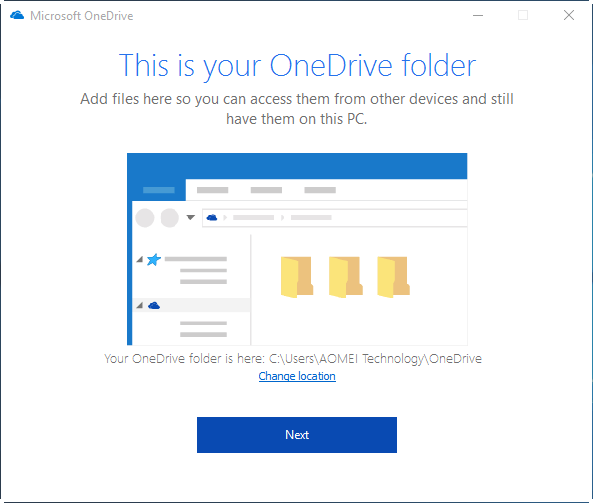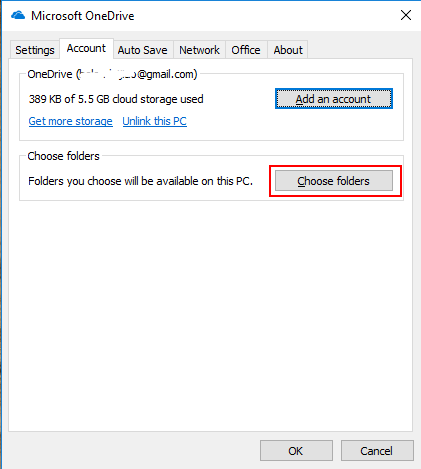
- #WINDOW 7 ONEDRIVE SYNC SETTINGS PC#
- #WINDOW 7 ONEDRIVE SYNC SETTINGS OFFLINE#
- #WINDOW 7 ONEDRIVE SYNC SETTINGS WINDOWS 7#
#WINDOW 7 ONEDRIVE SYNC SETTINGS OFFLINE#
Green filled circle with white check mark tells you the file or document has been downloaded and is available offline.Sync tells you that the folder or file is currently syncing with the cloud and will be available for use soon.
#WINDOW 7 ONEDRIVE SYNC SETTINGS PC#
Green check mark indicates that some files and documents in the folder are stored in the cloud, and others are stored locally on the PC.Cloud indicates that the file or folder is stored only in the cloud and will be downloaded when you want to open it.There are four different icons that appear on OneDrive folders on your PC, and these tell you the status of the folder, file, or document. Clear space to make the file visible, but leave it stored in the cloud until you want to open it.Always keep on this device to keep a downloaded and synched copy of the file.You can right-click on any and from the context menu that appears select…

To actually store files locally on your PC, open the OneDrive folder in File Explorer and you will see all of the folders that are visible on the PC. Instead they’ll be available “on demand”, meaning that if you double-click one to open it, provided you have a live Internet connection, it will be downloaded then. You will be shown a list of all the folders you have stored in OneDrive, any that you check will be visible in File Explorer on that PC, but won’t automatically be downloaded and stored locally. A dialog will appear in which you should click the Account tab if it’s not already highlighted, and then the Choose folders button. The first, if you already have OneDrive running on your PC as you’ll be taken straight to the next step when you set up it for the first time, is to open OneDrive by clicking it’s “cloud” icon in the System Tray, clicking the More icon, and then clicking Settings. Fortunately it’s easy to configure OneDrive to only sync the files you want to have on each PC, and there are two steps involved. You might have a PC such as a tablet or ultrabook though that doesn’t have enough space on which to store all of your files, or you might not want some files on a PC. I have a corporate account, associated with Weston’s Office 365 account, as well as a personal account at home.Microsoft’s OneDrive cloud sync and file storage service is a great way to back-up your files and documents, but also to synchronise them across your different PCs. I use it to keep files in sync between a variety of computers. Occasionally, it will decide it just wants to stop syncing all your files properly. This trick helped me, hope it will help you, too.įirst off, many of the sync errors I’ve run into in the past have been because of improper file naming. OneDrive, like its cousin SharePoint, have a more restrictive list of what characters can be used in the filename.
#WINDOW 7 ONEDRIVE SYNC SETTINGS WINDOWS 7#
The list is more restrictive than what Windows 7 allows. If you make sure you avoid those characters, that will help your troubleshooting immensely.īut there are some times where you’ll have a computer in your sync group that will decide it just does not want to play nice while the others do. When it comes to that, you’ll need to completely obliterate the locally stored cache and let OneDrive rebuild it. Note that this will completely kill your settings and files on your local computer for OneDrive, so I’d recommend copying the files out out of the OneDrive folder to somewhere else on your hard drive just to be safe.įirst off, close down all MS Office Applications (while this isn’t required from what I’ve seen, better safe than sorry). Then run task manager (right click on your taskbar and select “Start Task Manager”) and end the groove.exe, msouc.ece, and msosync.exe processes. Look in your system tray (the area by the clock) and make sure the Office Uploader and/or the OneDrive icons are no longer listed there (the orange circle with the arrow and the blue cloud, respectively).

Now remember, before doing the next steps, make sure you have copied out anything in your OneDrive folder that still needed to upload to the server, just to be safe. Hit Windows-Key-R to bring up the Windows run dialog and paste in “C:\Users\%username%\AppData\Local\Microsoft\Office\Spw”. Hit Windows-Key-R again, and this time you want to go to “C:\Users\%username%\AppData\Local\Microsoft\Office\15.0\OfficeFileCache”.


 0 kommentar(er)
0 kommentar(er)
